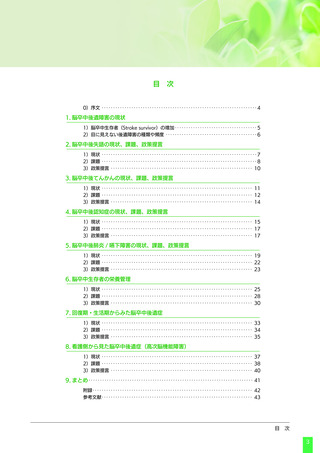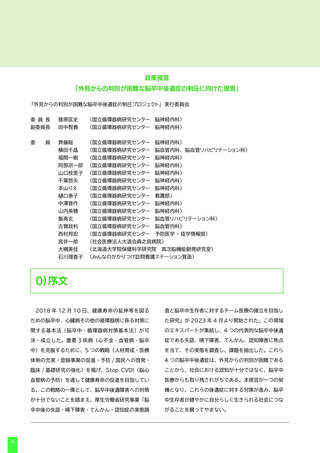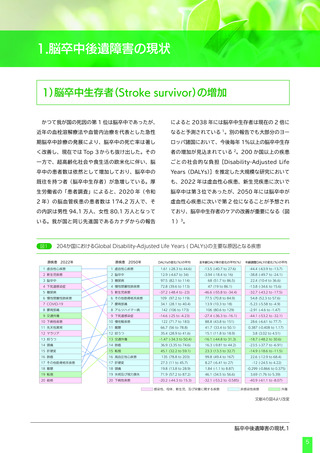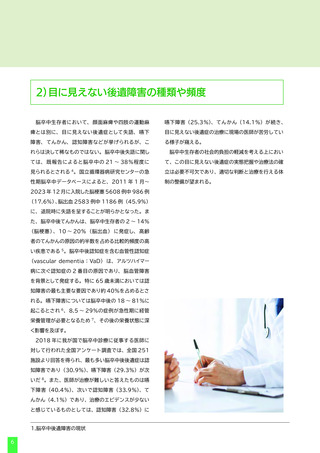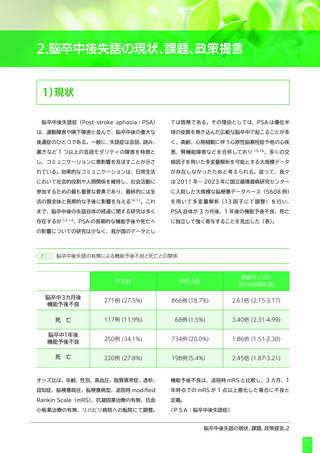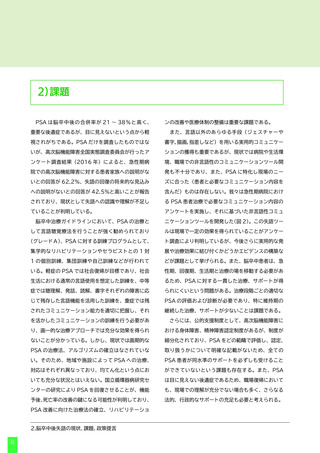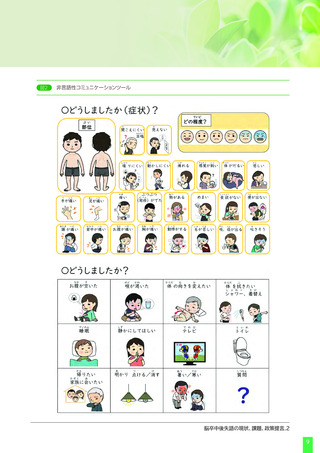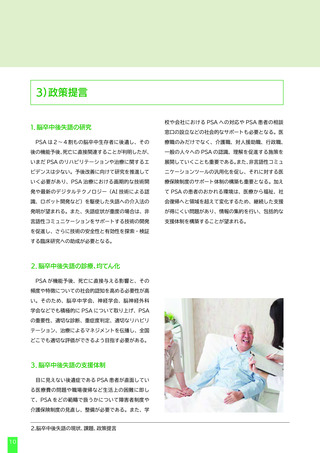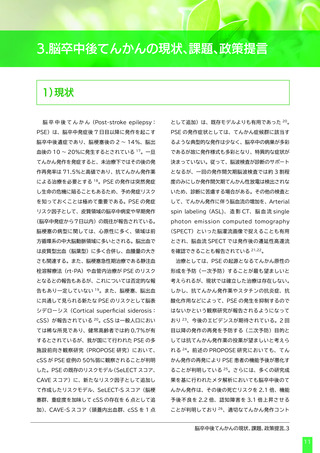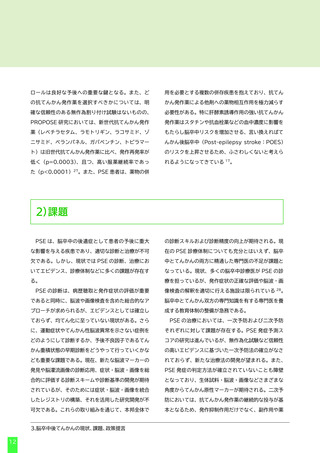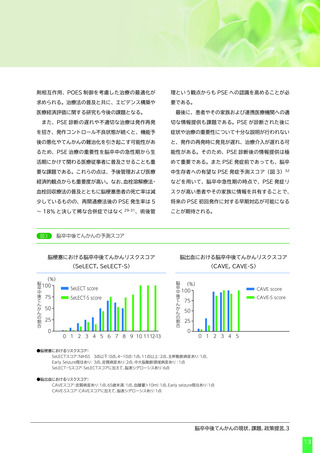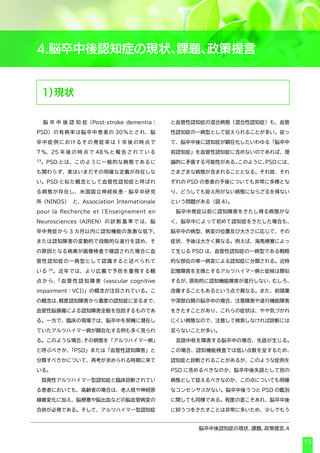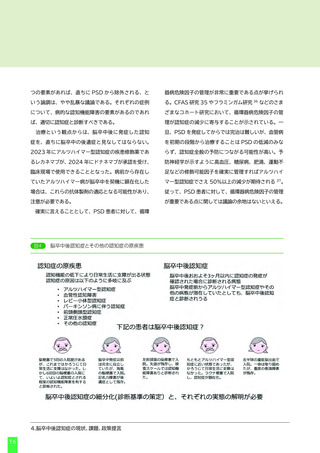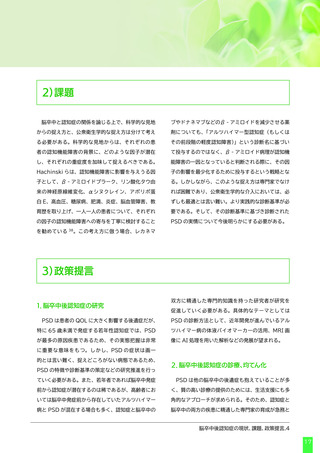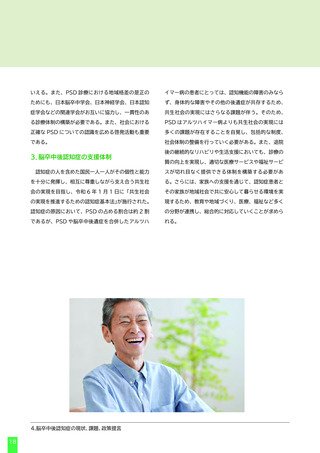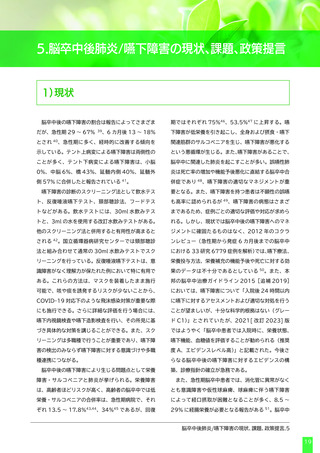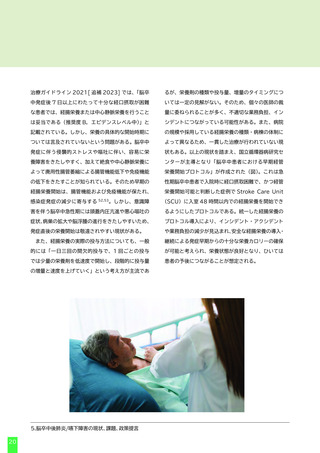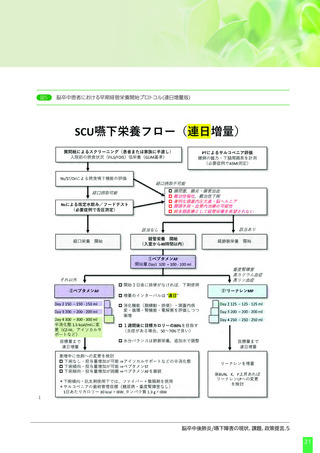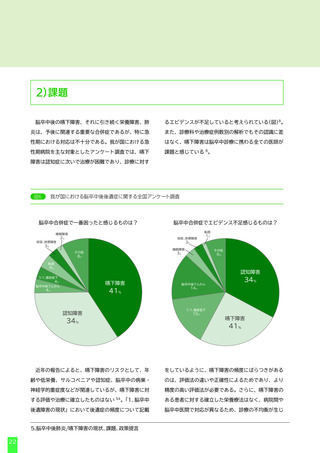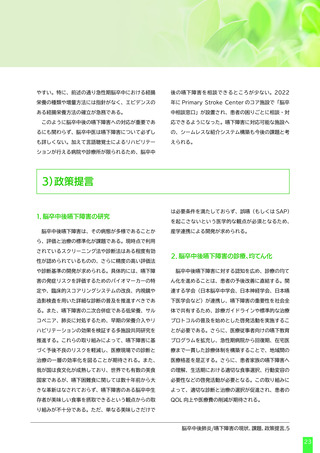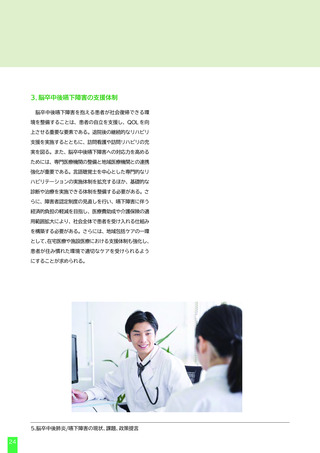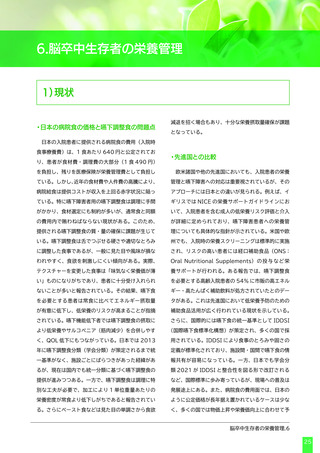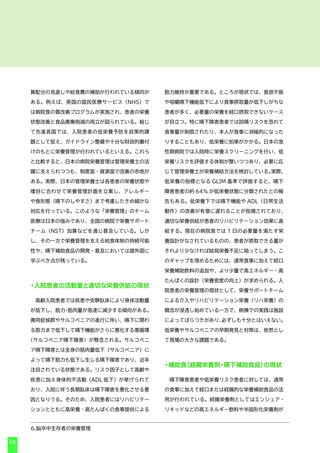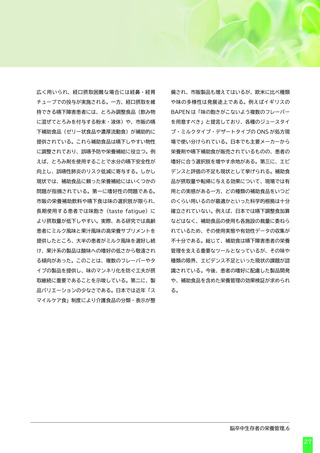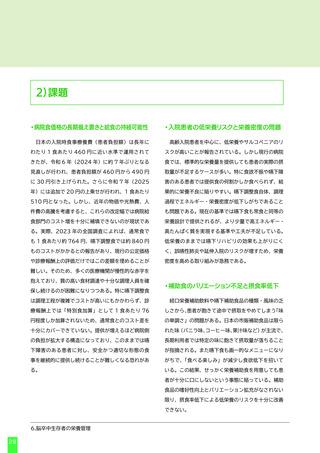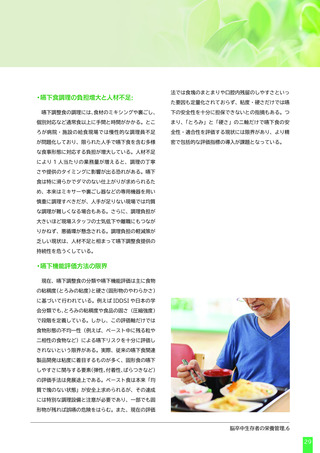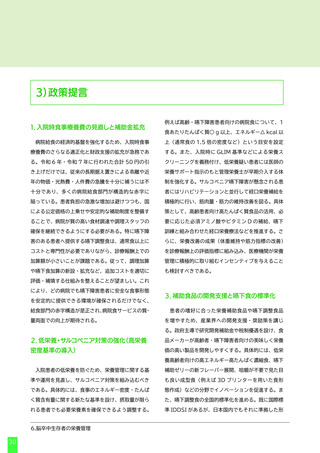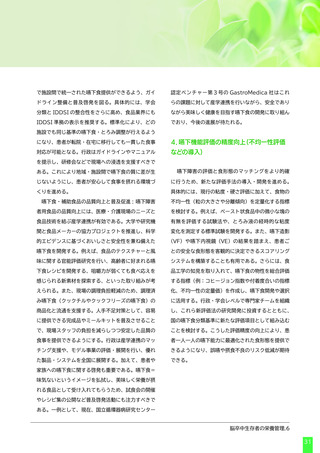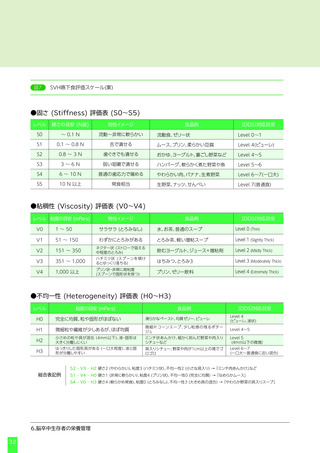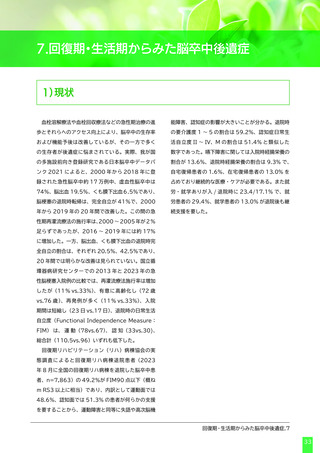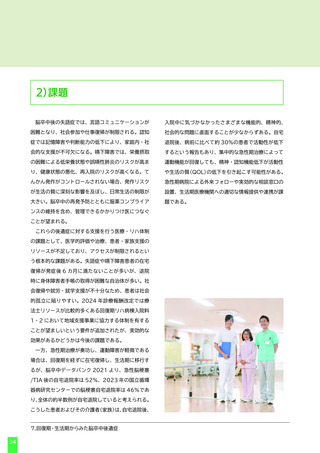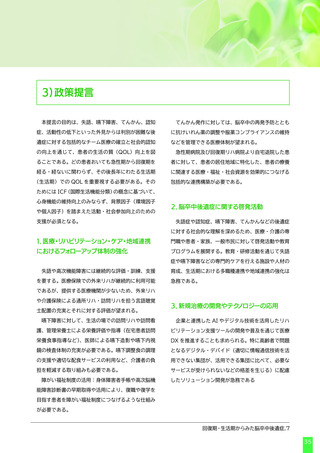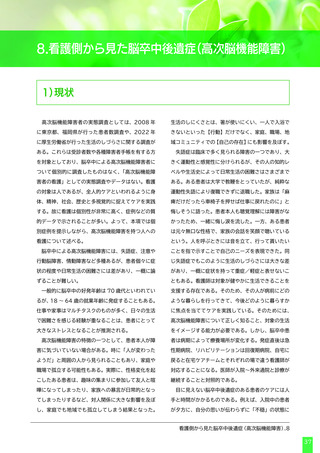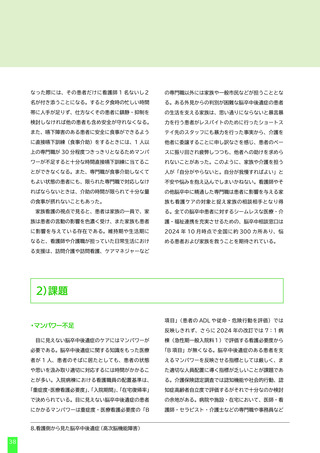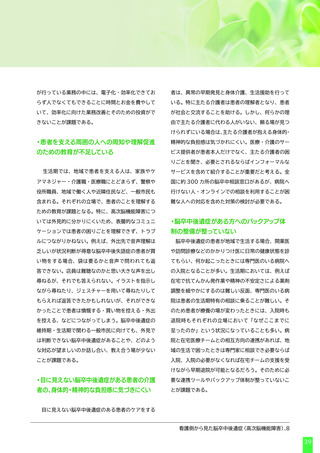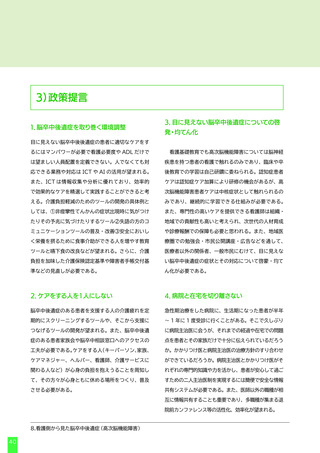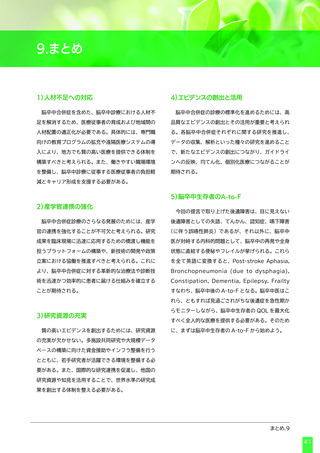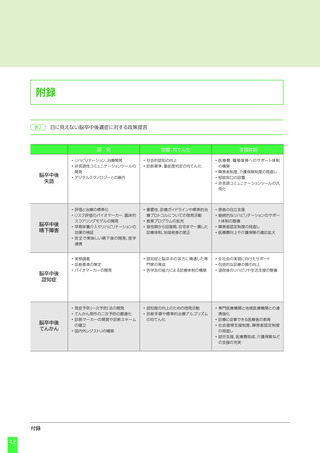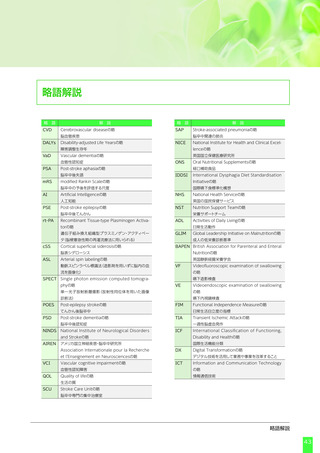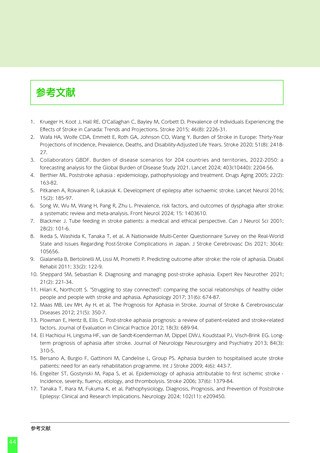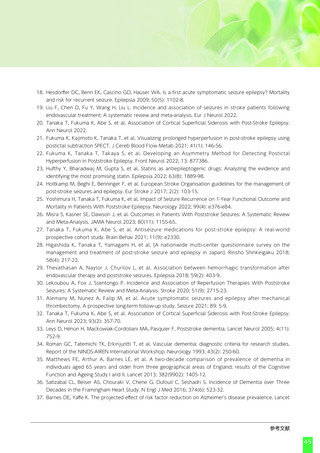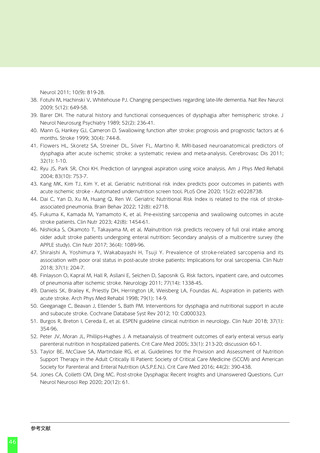よむ、つかう、まなぶ。
外見からの判別が困難な脳卒中後遺症の制圧に向けた提言 (44 ページ)
出典
| 公開元URL | https://www.ncvc.go.jp/hospital/wp-content/uploads/sites/2/20250707_neurology_seisakuteigen.pdf |
| 出典情報 | 「外見からの判別が困難な脳卒中後遺症の制圧に向けた提言」発表(7/7)《国立循環器病研究センター》 |
ページ画像
ダウンロードした画像を利用する際は「出典情報」を明記してください。
低解像度画像をダウンロード
プレーンテキスト
資料テキストはコンピュータによる自動処理で生成されており、完全に資料と一致しない場合があります。
テキストをコピーしてご利用いただく際は資料と付け合わせてご確認ください。
参考文献
1.
Krueger H, Koot J, Hall RE, O'Callaghan C, Bayley M, Corbett D. Prevalence of Individuals Experiencing the
Effects of Stroke in Canada: Trends and Projections. Stroke 2015; 46(8): 2226-31.
2.
Wafa HA, Wolfe CDA, Emmett E, Roth GA, Johnson CO, Wang Y. Burden of Stroke in Europe: Thirty-Year
Projections of Incidence, Prevalence, Deaths, and Disability-Adjusted Life Years. Stroke 2020; 51(8): 241827.
3.
Collaborators GBDF. Burden of disease scenarios for 204 countries and territories, 2022-2050: a
forecasting analysis for the Global Burden of Disease Study 2021. Lancet 2024; 403(10440): 2204-56.
4.
Berthier ML. Poststroke aphasia : epidemiology, pathophysiology and treatment. Drugs Aging 2005; 22(2):
163-82.
5.
Pitkanen A, Roivainen R, Lukasiuk K. Development of epilepsy after ischaemic stroke. Lancet Neurol 2016;
15(2): 185-97.
6.
Song W, Wu M, Wang H, Pang R, Zhu L. Prevalence, risk factors, and outcomes of dysphagia after stroke:
a systematic review and meta-analysis. Front Neurol 2024; 15: 1403610.
7.
Blackmer J. Tube feeding in stroke patients: a medical and ethical perspective. Can J Neurol Sci 2001;
28(2): 101-6.
8.
Ikeda S, Washida K, Tanaka T, et al. A Nationwide Multi-Center Questionnaire Survey on the Real-World
State and Issues Regarding Post-Stroke Complications in Japan. J Stroke Cerebrovasc Dis 2021; 30(4):
105656.
9.
Gialanella B, Bertolinelli M, Lissi M, Prometti P. Predicting outcome after stroke: the role of aphasia. Disabil
Rehabil 2011; 33(2): 122-9.
10. Sheppard SM, Sebastian R. Diagnosing and managing post-stroke aphasia. Expert Rev Neurother 2021;
21(2): 221-34.
11. Hilari K, Northcott S. "Struggling to stay connected": comparing the social relationships of healthy older
people and people with stroke and aphasia. Aphasiology 2017; 31(6): 674-87.
12. Maas MB, Lev MH, Ay H, et al. The Prognosis for Aphasia in Stroke. Journal of Stroke & Cerebrovascular
Diseases 2012; 21(5): 350-7.
13. Plowman E, Hentz B, Ellis C. Post-stroke aphasia prognosis: a review of patient-related and stroke-related
factors. Journal of Evaluation in Clinical Practice 2012; 18(3): 689-94.
14. El Hachioui H, Lingsma HF, van de Sandt-Koenderman M, Dippel DWJ, Koudstaal PJ, Visch-Brink EG. Longterm prognosis of aphasia after stroke. Journal of Neurology Neurosurgery and Psychiatry 2013; 84(3):
310-5.
15. Bersano A, Burgio F, Gattinoni M, Candelise L, Group PS. Aphasia burden to hospitalised acute stroke
patients: need for an early rehabilitation programme. Int J Stroke 2009; 4(6): 443-7.
16. Engelter ST, Gostynski M, Papa S, et al. Epidemiology of aphasia attributable to first ischemic stroke Incidence, severity, fluency, etiology, and thrombolysis. Stroke 2006; 37(6): 1379-84.
17. Tanaka T, Ihara M, Fukuma K, et al. Pathophysiology, Diagnosis, Prognosis, and Prevention of Poststroke
Epilepsy: Clinical and Research Implications. Neurology 2024; 102(11): e209450.
参考文献
44
1.
Krueger H, Koot J, Hall RE, O'Callaghan C, Bayley M, Corbett D. Prevalence of Individuals Experiencing the
Effects of Stroke in Canada: Trends and Projections. Stroke 2015; 46(8): 2226-31.
2.
Wafa HA, Wolfe CDA, Emmett E, Roth GA, Johnson CO, Wang Y. Burden of Stroke in Europe: Thirty-Year
Projections of Incidence, Prevalence, Deaths, and Disability-Adjusted Life Years. Stroke 2020; 51(8): 241827.
3.
Collaborators GBDF. Burden of disease scenarios for 204 countries and territories, 2022-2050: a
forecasting analysis for the Global Burden of Disease Study 2021. Lancet 2024; 403(10440): 2204-56.
4.
Berthier ML. Poststroke aphasia : epidemiology, pathophysiology and treatment. Drugs Aging 2005; 22(2):
163-82.
5.
Pitkanen A, Roivainen R, Lukasiuk K. Development of epilepsy after ischaemic stroke. Lancet Neurol 2016;
15(2): 185-97.
6.
Song W, Wu M, Wang H, Pang R, Zhu L. Prevalence, risk factors, and outcomes of dysphagia after stroke:
a systematic review and meta-analysis. Front Neurol 2024; 15: 1403610.
7.
Blackmer J. Tube feeding in stroke patients: a medical and ethical perspective. Can J Neurol Sci 2001;
28(2): 101-6.
8.
Ikeda S, Washida K, Tanaka T, et al. A Nationwide Multi-Center Questionnaire Survey on the Real-World
State and Issues Regarding Post-Stroke Complications in Japan. J Stroke Cerebrovasc Dis 2021; 30(4):
105656.
9.
Gialanella B, Bertolinelli M, Lissi M, Prometti P. Predicting outcome after stroke: the role of aphasia. Disabil
Rehabil 2011; 33(2): 122-9.
10. Sheppard SM, Sebastian R. Diagnosing and managing post-stroke aphasia. Expert Rev Neurother 2021;
21(2): 221-34.
11. Hilari K, Northcott S. "Struggling to stay connected": comparing the social relationships of healthy older
people and people with stroke and aphasia. Aphasiology 2017; 31(6): 674-87.
12. Maas MB, Lev MH, Ay H, et al. The Prognosis for Aphasia in Stroke. Journal of Stroke & Cerebrovascular
Diseases 2012; 21(5): 350-7.
13. Plowman E, Hentz B, Ellis C. Post-stroke aphasia prognosis: a review of patient-related and stroke-related
factors. Journal of Evaluation in Clinical Practice 2012; 18(3): 689-94.
14. El Hachioui H, Lingsma HF, van de Sandt-Koenderman M, Dippel DWJ, Koudstaal PJ, Visch-Brink EG. Longterm prognosis of aphasia after stroke. Journal of Neurology Neurosurgery and Psychiatry 2013; 84(3):
310-5.
15. Bersano A, Burgio F, Gattinoni M, Candelise L, Group PS. Aphasia burden to hospitalised acute stroke
patients: need for an early rehabilitation programme. Int J Stroke 2009; 4(6): 443-7.
16. Engelter ST, Gostynski M, Papa S, et al. Epidemiology of aphasia attributable to first ischemic stroke Incidence, severity, fluency, etiology, and thrombolysis. Stroke 2006; 37(6): 1379-84.
17. Tanaka T, Ihara M, Fukuma K, et al. Pathophysiology, Diagnosis, Prognosis, and Prevention of Poststroke
Epilepsy: Clinical and Research Implications. Neurology 2024; 102(11): e209450.
参考文献
44


